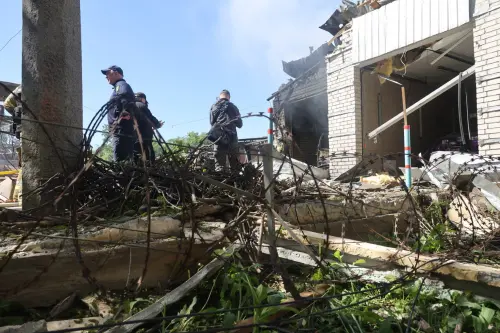The Army chief of staff, Gen. Eric Shinseki, told Congress last week that stabilizing Iraq after a war is won might require as many forces as deposing Saddam. A couple of days later, the department’s top two civilians challenged his logic, with Deputy Secretary of Defense Paul Wolfowitz pointedly calling Gen. Shinseki’s estimates “way too high.” Who is right? And who should be making such calls, the nation’s top military brass or its civilian leaders?
The second question is easy. Estimating requirements for stabilization forces is partly a military and partly a broader strategic challenge, so civilians and military personnel should both weigh in. Secretary of Defense Donald Rumsfeld seemed to agree with this sentiment, when he stated that in no way was Gen. Shinseki out of line in making his comments—even if Mr. Rumsfeld would probably have preferred that the chief of staff bite his tongue.
As for the harder question of who is right, a wide body of military history, traditional rules of thumb for sizing security forces and specific characteristics of Iraq itself suggest that Gen. Shinseki’s estimate is reasonable—at least for the early going. If we are lucky, Mr. Wolfowitz may prove correct within a year or so of the completion of any war, though it is more likely to require two to four years before troop levels decline very much.
One way to estimate occupation requirements is through the use of history. NATO put a force of more than 50,000 into Bosnia, a country of less than 5 million, in 1995 to help keep the peace between three major internal groups—the same number as are found in Iraq. Scaling that number upward to account for the much greater size of Iraq suggests a force of roughly 250,000 troops. Using the Kosovo operation as the basis for extrapolation would lead to an even higher figure. Using the U.S. and Allied experiences in Germany and Japan after World War II would suggest a somewhat smaller number of perhaps 100,000 to 150,000.
A second approach would be to look at the simple demands of policing large societies, an activity that usually requires 3 or 4 security personnel per 1,000 inhabitants. These rules of thumb suggest a stabilization force in Iraq approaching 100,000 for this one purpose alone.
Turning to the specifics of Iraq, there will be many needs besides policing in the early going after war. In rebutting Gen. Shinseki, Mr. Wolfowitz suggested that Iraq’s ethnic groups do not have the same history of conflict as warring parties in a place like the Balkans. Perhaps, though, Saddam’s attacks on the Kurds and Shia in the late 1980s and early 1990s (as well as other times in Iraq’s history) cast some doubt on that argument.
Other challenges will exist in Iraq right after Saddam is deposed. First and foremost, weapons of mass destruction will need to be located and destroyed before terrorists can get their hands on them. Baath Party and military leaders will need to be found, arrested and put on trial. Unfriendly neighboring countries such as Iran, and even U.S. allies such as Turkey, will need to be discouraged from pursuing their own interests in Iraq through military means.
Security will also have to be provided for the nongovernmental organizations and U.N. groups who will deliver humanitarian aid in Iraq. Present estimates suggest that 10 million people will urgently need food within six weeks of the start of a war. Many will also need medical care, due to the inevitability that urban combat will cause large numbers of civilian casualties. Any chemical weapons that might have been used by Iraqi forces in the course of conflict will also need to be cleaned up.
So Gen. Shinseki was on solid ground in estimating that stabilization forces will have to be large at first. But Mr. Wolfowitz’s comments reflect the right aspiration for the United States—as well as the aspiration of most Iraqi dissidents and would-be leaders of their country in the post-Saddam era.
Perhaps we will get lucky and reduce total troop requirements for the postwar mission to 100,000 or less quickly. But the more realistic way to plan is to think like Gen. Shinseki. Among its other implications, this means trying to patch things up with our allies so we can secure their help in winning the peace in Iraq, even if we are unlikely to receive (and unlikely to need) the help of most of them in winning the war.



Commentary
Op-edShinseki vs. Wolfowitz
March 4, 2003